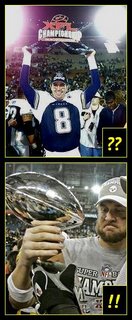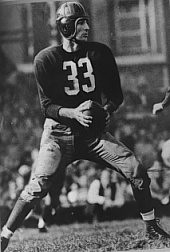
If I were the CEO of McDonald's -- no, wait, Arby's; damn I wish were the CEO of Arby's -- I would never turn down hundreds of millions of dollars a year in free advertising. That would be a terrible, short-sighted business decision, and it would peg me as a terrible, short-sighted business person.
I mean, imagine that all across the country, local TV stations wanted to come into Arby's restaurants once a week and shoot a couple hours' worth of tape. Then they'd use that footage all week long in stories about Arby's. Every day at noon, 5, 6 and 11, they'd serve up puff pieces about how great the sandwiches are at Arby's, about how much people in town just love Arby's, about lesser-known but still-delicious items on the Arby's menu, about the people behind the counter and in front of the deep-fryer who make the Arby's experience so world-class. Even when the stories they did were critical, they weren't too critical -- maybe an exposé on why there aren't more beverage selections available to complement the wonderful Arby's fare, or a probing piece on what kind of sandwiches Arby's could start making (bologna!) to further enhance the Arby's way of life.
Then, the next week, the stations would send crews back to Arby's to shoot new footage and start the cycle all over again.
Getting your product featured on TV without having to buy advertising time is known as "free media," and it's the Holy Grail of the public relations industry. Free media increases interest in your product, which translates into increased sales, which means more money in your pocket.
The NFL has decided it can do without free media.
You must have heard by now that the NFL owners voted last month to bar local TV stations' cameras from the sidelines during games. The league cited several reasons for this action, and we'll waste time examining a couple of them in a second, but the decision comes down to cash money, just like everything else out of 280 Park Avenue.
The league says the move is necessary ...
... to protect its property rights because unauthorized video of game action has been popping up online. The problem with this argument is, whenever I venture onto the Internet in search of game video, what I end up finding is clips from the network broadcast that someone has captured and uploaded. That's a violation of copyright for sure, but it isn't the local stations' problem. If the NFL is worried about stations posting their own game footage on their websites, it could easily prevent it by issuing sideline credentials only to those organizations that promise not to post -- and canceling the creds of those that do.
... to reduce "sideline clutter." Yes, the league actually floated this one. On the sidelines during your typical NFL game, you'll find cheerleaders, the color guard, maybe a dance line, halftime entertainers cooling their heels, Jerry Jones, a marching band or two, guys in mascot suits, two dozen still photographers, some asshole comedian doing a "bit" for Fox, several NFL Films crews, a platoon of soldiers in folding chairs, Pam Oliver or Melissa Stark, and a handful of yahoos who paid $10,000 a head to sit in a Barcalounger on the sidelines. So yeah, eliminating a few local TV cameras should clear things out nicely.
These arguments are smokescreens, of course. The NFL doesn't want local crews shooting from the sidelines because the footage those crews shoot doesn't produce any direct revenue for the league. When Fox, CBS, NBC or ESPN cameras are rolling in-stadium, it's because those networks are paying a billion-plus bucks a year for the privilege. But when the KRUD camera crew is in the house, it's there essentially for journalistic reasons, and as far as the owners can determine, there just ain't no money in that.
(It's important to note that the smokescreen blows the other way, too. Opponents of the new sideline policy have pointed out that many league stadiums are taxpayer-financed -- though pretty much all are taxpayer-supported in some fashion -- and therefore a team has no right to restrict what the press or anyone else can do on public property. But the team is paying the stadium authority rent for the use of the facility, and the rent gives them the run of the place. If you don't like that, take it up with the local officials dumb enough to write the lease, not the team smart enough to sign it.)
The NFL's strategy in the 21st century is to establish total control over the "product." That product is not professional football, mind you -- it's televised professional football. The NFL has no problem with written-word reporters coming into a stadium to cover a game, because the league views newspaper stories, magazine pieces and certain non-video Web coverage as necessary to keep up interest in the product. It doesn't feel the same way about locally shot video. It sees that as giving the product away for free. So it's banning the affiliates' cameras from the sidelines -- and thus chasing away it's most valuable source of free media. You could try explaining that other successful businesses, from food producers to barber shops to premium cable networks to law firms, give away some of their goods and services in the interest of widening the customer base, but you'd be wasting your time.
The no-local-cameras edict came down at around the same time the league announced that it will move eight of its 256 regular season games to the NFL Network in 2006. (Do you suppose the league gave its "broadcast partners" a 3% rebate for taking away 3% of the games? Ha.) This is a power play intended to force local cable systems to carry the NFL Network, and it's entirely within the league's rights. I have no doubt it'll work. If it produces enough ad revenue for NFL Net, watch for more games to migrate to non-broadcast (that is, pay) TV. In fact, it's not hard to envision a future in which all broadcasts of NFL games are controlled directly by the league. And in which all the games are on pay-per-view. How much do you suppose they'd charge for the Super Bowl?
Pete Rozelle, a PR man by trade, was more responsible than anyone for building the NFL into the sports colossus it is today. From the time he took over as commissioner in 1960, Rozelle's vision for growing the league centered on broadcasts over free TV and open access for both local and national media. And throughout his three-decade tenure, he held closely to those principles. Why did Al Davis move the Raiders to Los Angeles in 1982? Most people will say "for more stadium revenue," but most people would be wrong. Davis believed that the NFL would soon move from free TV to pay-per-view, and he wanted to be in a market with the greatest possible number of TV sets. Thirteen years later, with all NFL games still available on broadcast or basic cable, he moved back to Oakland. Pete Rozelle -- finally -- seemed to have gotten the better of Al Davis.
Now, however, it's entirely possible that Davis' vision, not Rozelle's, will ultimately win out. Games will move to NFL Network, then NFL2 (the Deuce!), NFL Classic, NFL News and so on and so on. If you want to watch pro football, you'll have to pay for premium cable or satellite packages. Playoffs? Super Bowls? Strictly pay-per-view (and you'll still have to sit through commercials). The National Football League is prepared to go where no sport has gone before.
No, wait, I take that back. One major American sport has already moved itself almost exclusively to premium cable and pay-per-view. NFL owners would be wise to study this sport. To see what can happen when a sport unhooks itself from the lifeline of free TV and makes its biggest matches available only to those viewers willing to pay $50.
Boxing.
Today, the boxing world would kill for the kind of free media the NFL is turning away, the kind of free media that boxing once attracted. But no one's coming to cover boxing anymore because no one cares anymore. Once the most popular and highest-rated sport on TV, perhaps the only sport more suited for TV than football, boxing over-reached and killed itself. The powers that control the sport wanted total control over the product. They wanted even more money. They got the control but not the money. Now boxing is a sad circus, a disreputable spectacle, a niche sport, a farce.
America needs you, Pete Rozelle.


